Not often in a season do must-win games come so early for a team as it did for Man United on Saturday afternoon. The Red Devils were without a win in three games, putting them at an early disadvantage in the race for the hallowed fourth place. Leicester City, on the other hand, are a team making progress under Brendan Rogers. His exciting style – which has brought the best out of Jamie Vardy – has recaptured and refocused the Foxes as they attempt to make another legitimate claim for the higher positions in the table.
In this tactical analysis, we explore how Man United battled their way to a precious 1-0 victory against a dangerous Leceister side who have now only won once in 21 attempts against the Manchester club.
Line Ups
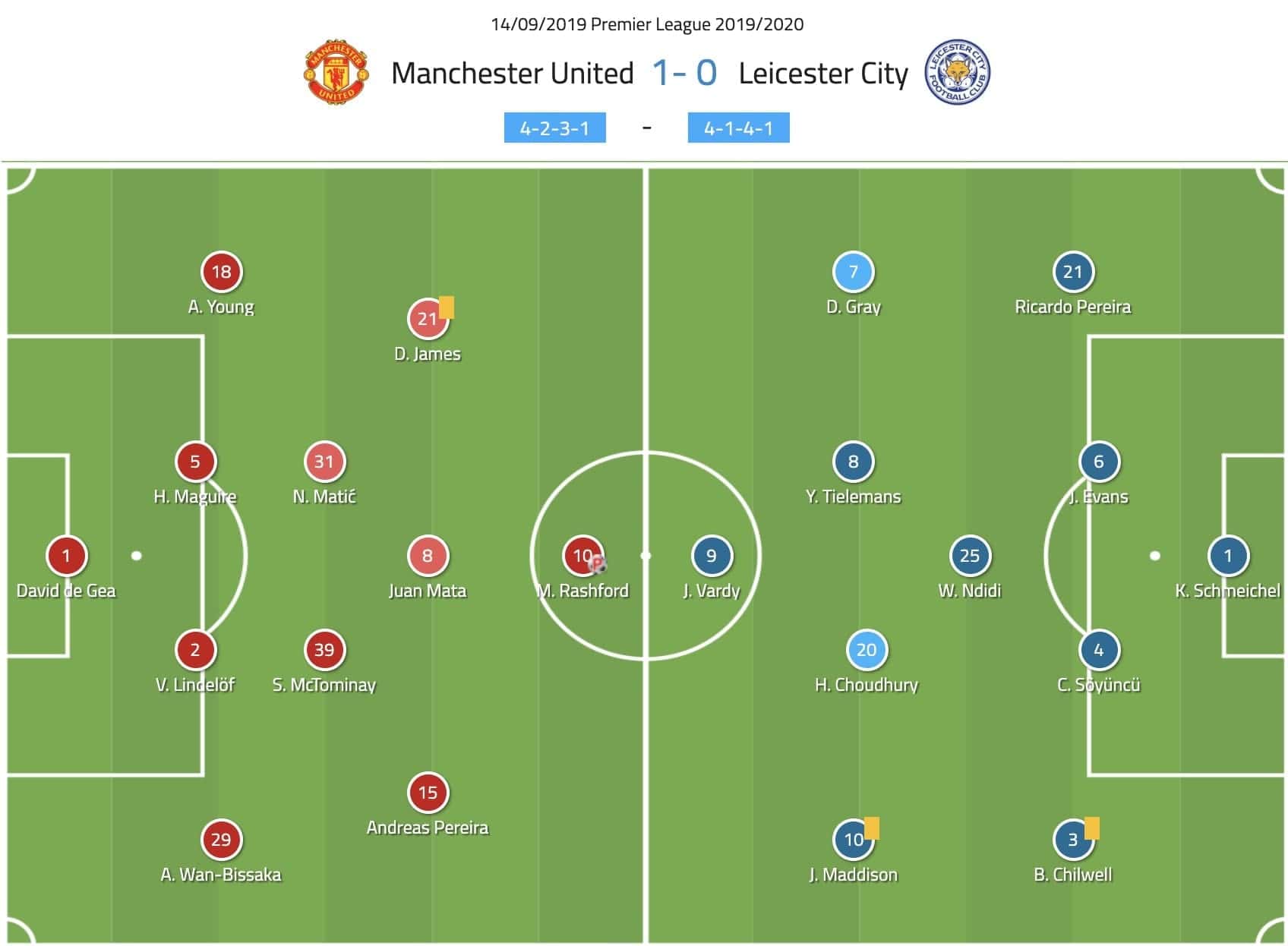
The home side started without the creative flair of Paul Pogba, meaning Ole Gunnar Solskjær opted for a 4-2-3-1 system with Nemanja Matić and Scott McTominay deployed as the anchors in midfield. Injuries to Luke Shaw and top scorer Anthony Martial provided starts for Ashley Young and Marcus Rashford. Harry Maguire and Victor Lindelöf kept their place in the side, continuing to be the manager’s favoured centre-back pairing.
Rogers started his Leicester side in a 4-1-4-1 shape, a system he prefers to use when facing the top six away from home. Wilfred Ndidi started in the holding role, with Youri Tielemans and Hamza Choudhury positioned slightly ahead. James Maddison and Demarai Gray offered the width as Jamie Vardy spearheaded the attack for the Foxes.
United keep things stable
Without the dynamism of Pogba in the middle of the park, Solskjær opted for an industrious midfield that wouldn’t be exposed in defensive transition. McTominay and Matić adopted positions just in front of their back four and rarely made movements beyond the ball.
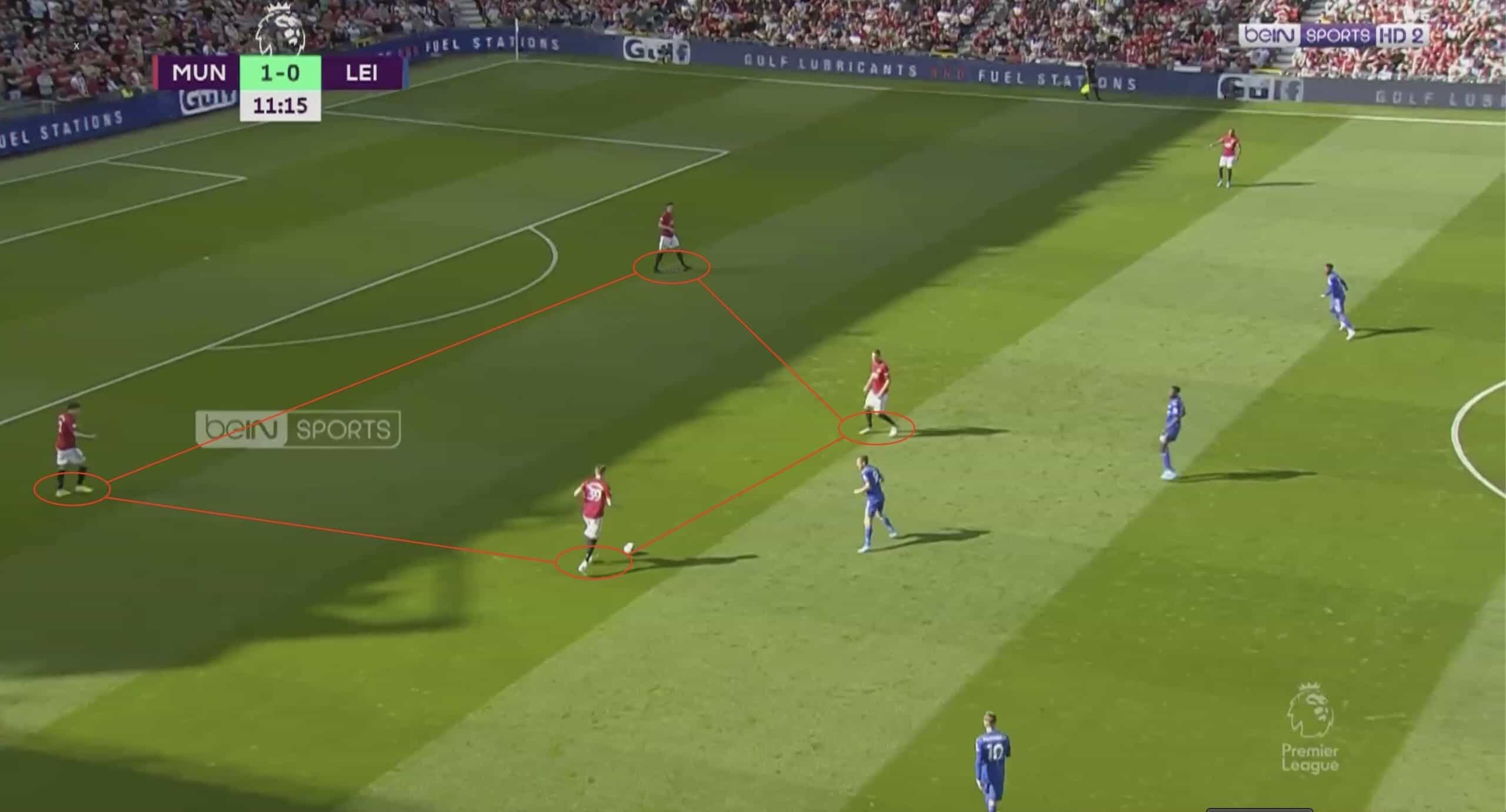
This reduction in freedom meant when possession was turned over, it required much less time to transition into the correct defensive positioning. This nullified Vardy who thrives in the opposition’s defensive transition window. As a result, the ex-England international only touched the ball 17 times and his team achieved an xG of just 0.46.
United’s midfield pairing worked tirelessly to break attacks and provide a defensive structure that shielded Maguire and Lindelöf from exposure to Maddison, Gray and Vardy.
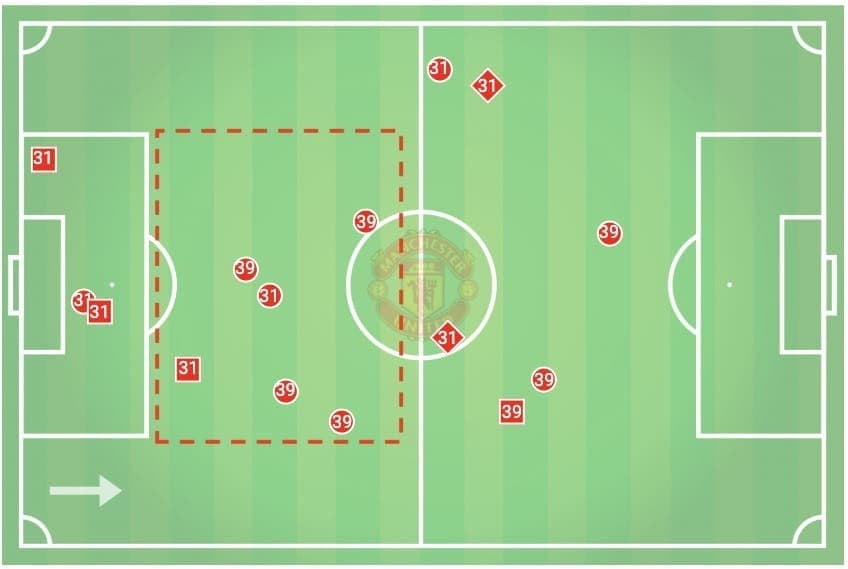
The duo made 14 recoveries between them in key areas of the pitch. You can see above that they weren’t pulled out of position into the wide spaces choosing to make the majority of their recoveries within the width of the penalty area. This ensured they offered full protection to their centre-backs and prevented Leicester using vertical passing lanes to break through the lines. The away side were reduced to just 20% of their attacks being created through the centre of the pitch.
Tactical mismatch
By using tactics that installed a solid foundation, and limited the attacking potential of their opponents, United used their midfield pairing to free up the wider spaces and cause Leicester tactical problems.
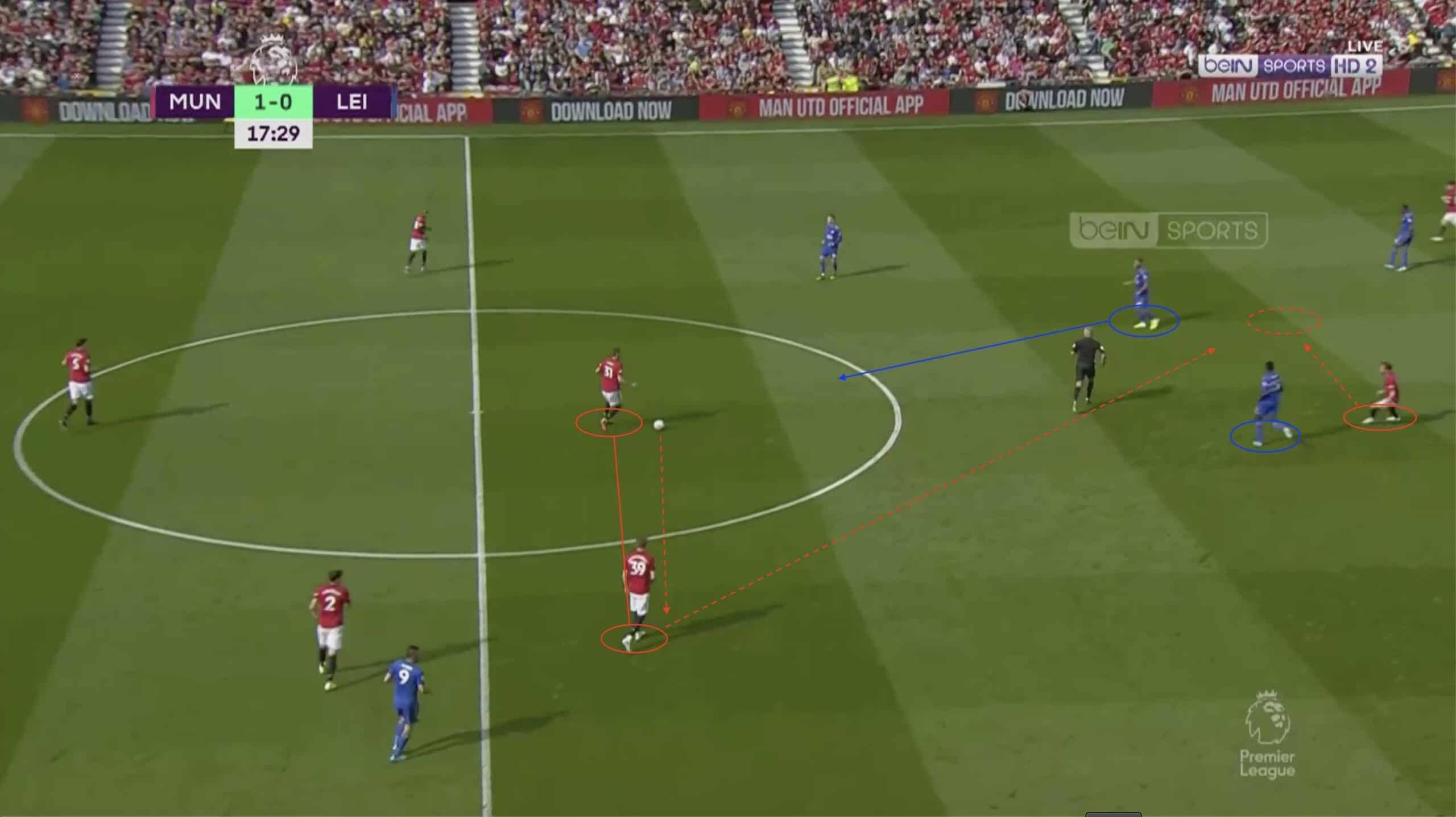
In possession, Matić and McTominay collected the ball from their centre-backs as Man United attempted to build attacks from the back. This deep positioning of the double pivot gave Leicester’s midfield spacial problems.
When they sat back, as they did in the instance above, they stayed narrow to block passing lanes into Rashford and Mata. As a result, McTominay and Matić were allowed plenty of time on the ball to find their teammates in space in the wide areas, as we see below.
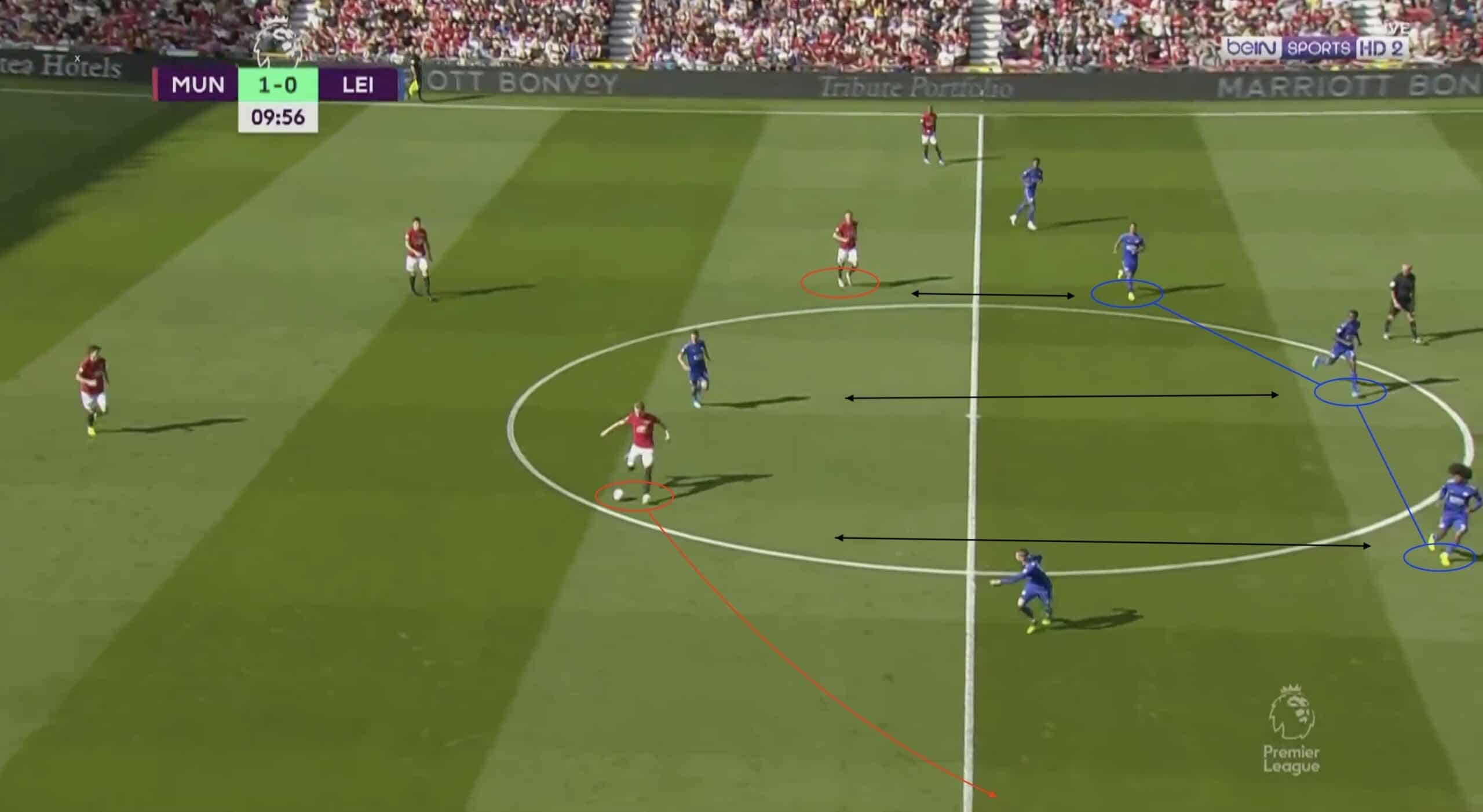
This allowed United to build 83% of their attacks in the lateral spaces, where the dangerous Daniel James operated. The young Welshman saw a lot of the ball (31 touches) and achieved a successful dribble rate of 80%.
To prevent the ball from finding James easily, Leicester instead chose to press Man United’s midfield pairing. However, this created space in between the defensive lines as their back four were unwilling to condense the space by holding a higher line, in fear of Rashford’s pace in behind.
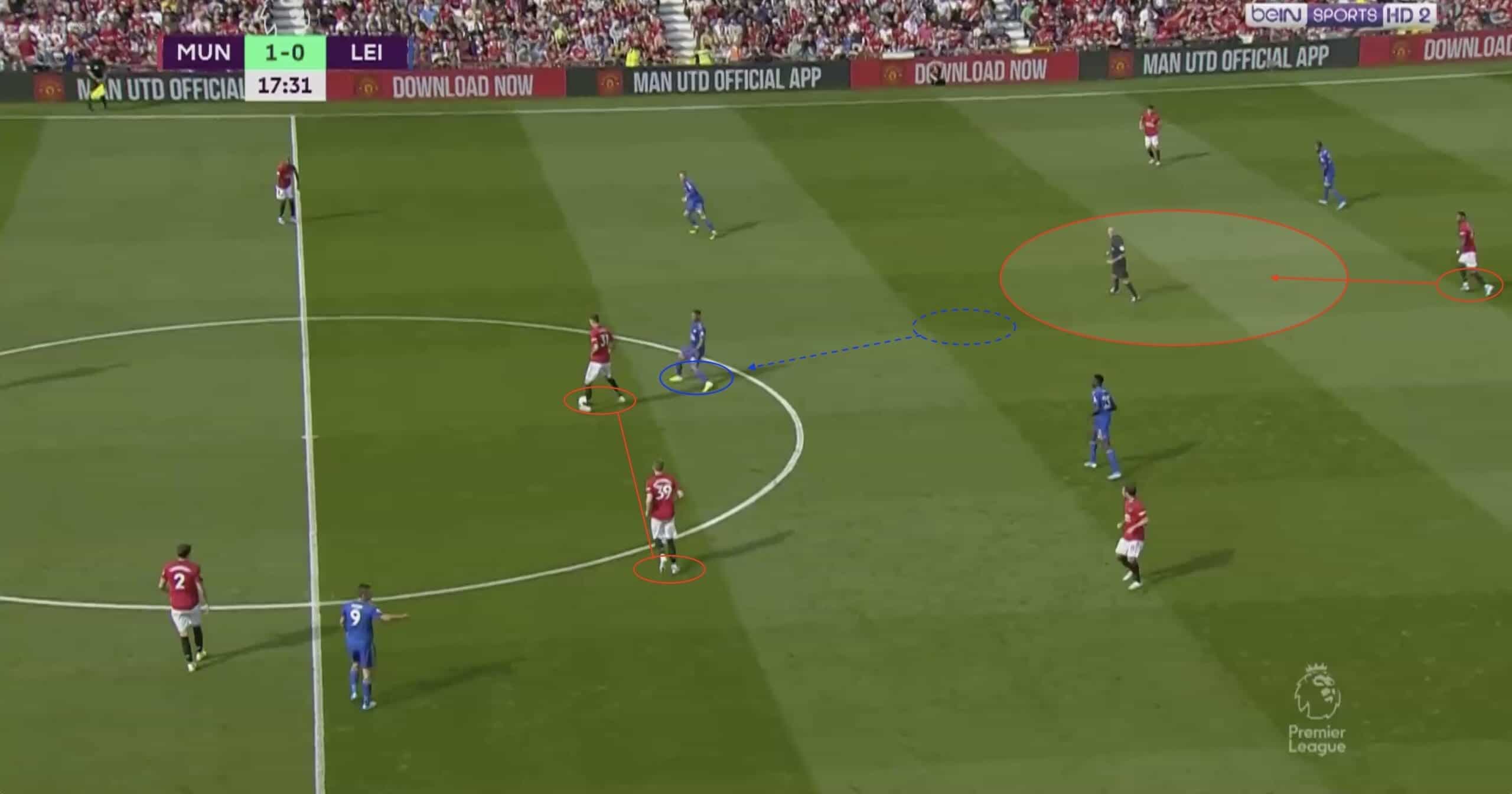
Above you can see Tielemans step out of his line to press Matić in possession. This left spaces in behind him for Rashford to exploit. Ndidi is unable to cover the space because he is monitoring the positioning of Mata. This allowed United to play through the lines of Leicester without too much creativity required.
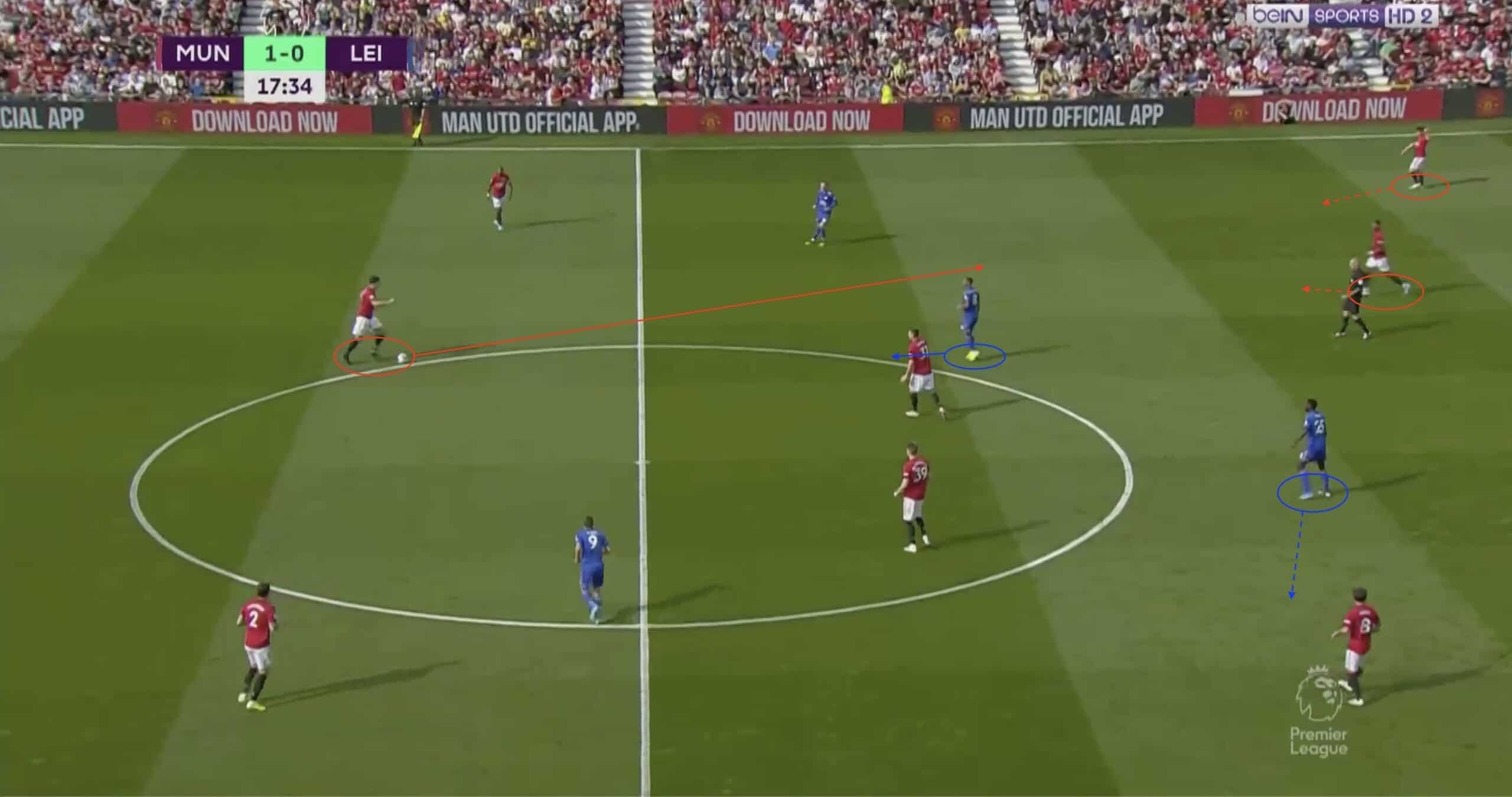
Once the lines were broken, the Leicester midfield found themselves the wrong side of the ball and forced to make recovery runs as Rashford broke into the vacated space.
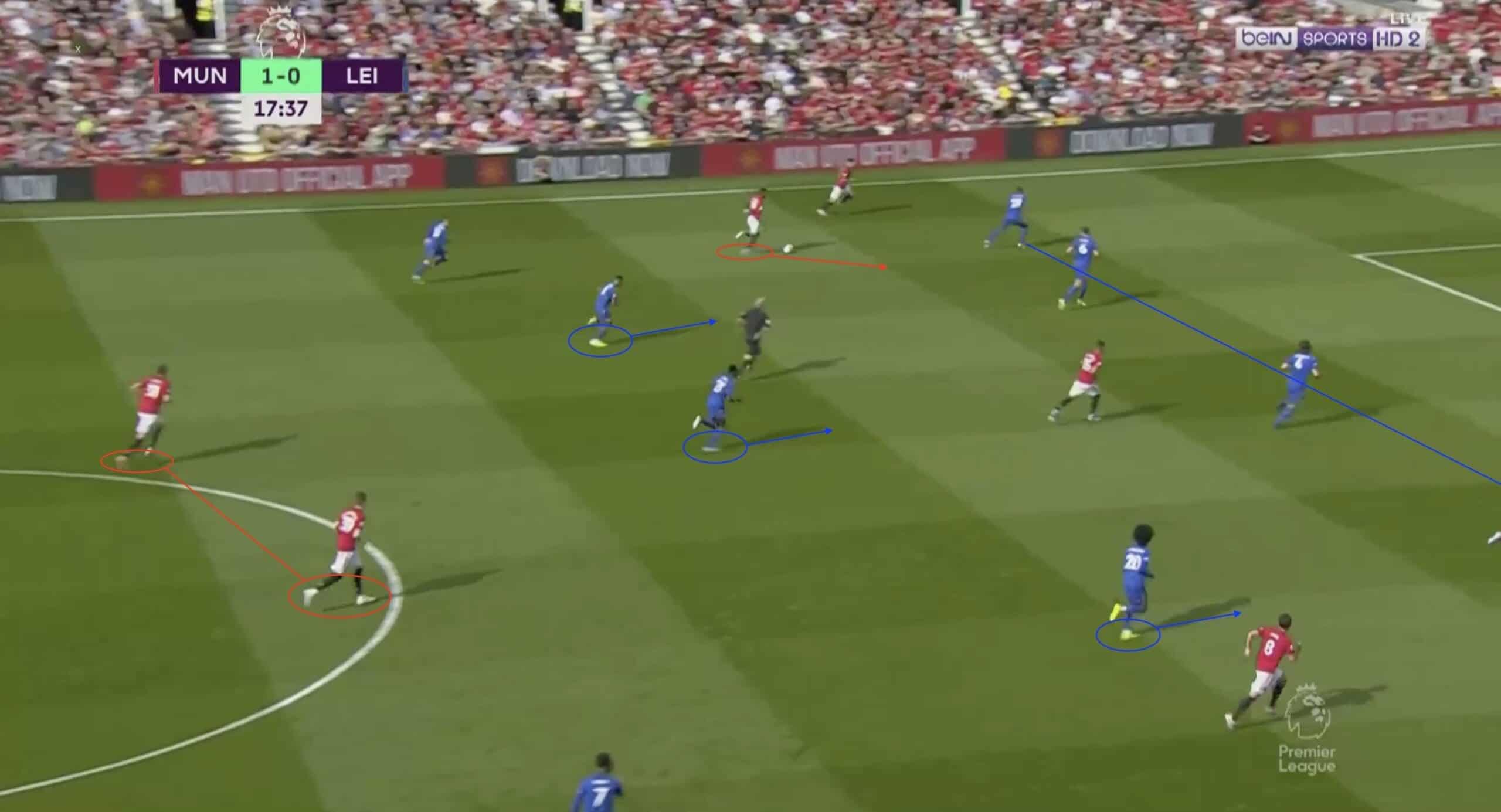
To avoid this, the away side needed to either press the ball with perfect unison between their midfield advancing and their defensive line squeezing up. This would require a set of triggers to ensure the movements were instant, synonymous and without the need for verbal communication.
Alternatively, as an in-game adjustment, Leicester could have matched Man United’s formation of 4-2-3-1, also giving themselves a deeper double pivot, which would have blocked off the dangerous passing lanes into United’s front men.
Areas of weakness
Despite their ability to build attacks, Man United only managed an NPxG of 0.3. This was partly due to their injury woes, and partly down to a resilient Leicester defence.
The home side, however, did show they were vulnerable to long balls, which Leicester failed to capitalise on.
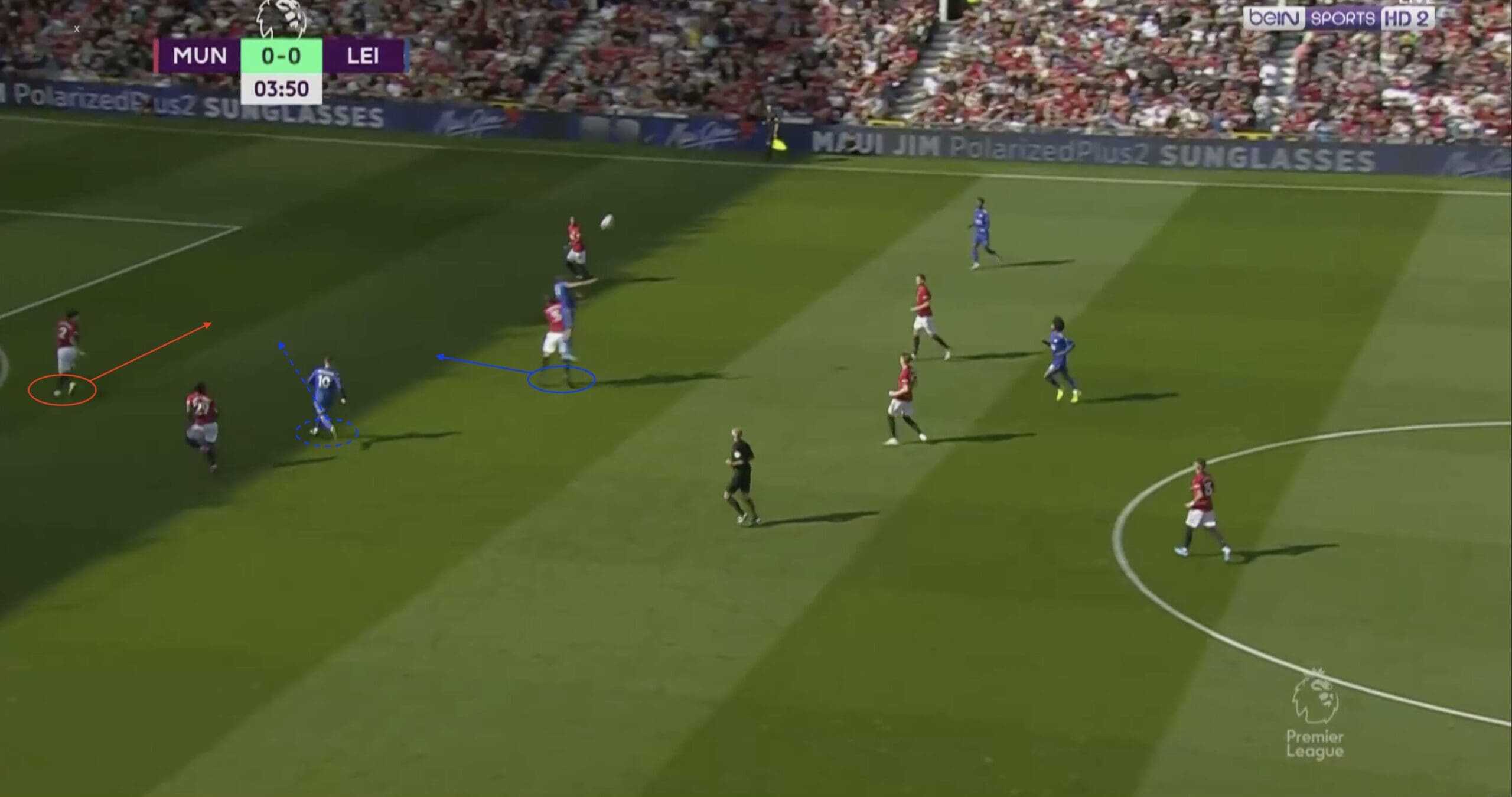
Above, we can see Maguire losing an aerial duel with Vardy after a long ball is played forward by Leicester. Lindelöf correctly dropped deeper in anticipation of his teammate losing the duel. This deeper movement gave him scope to track Maddison’s run and keep his eyes on the ball as it entered the second phase.
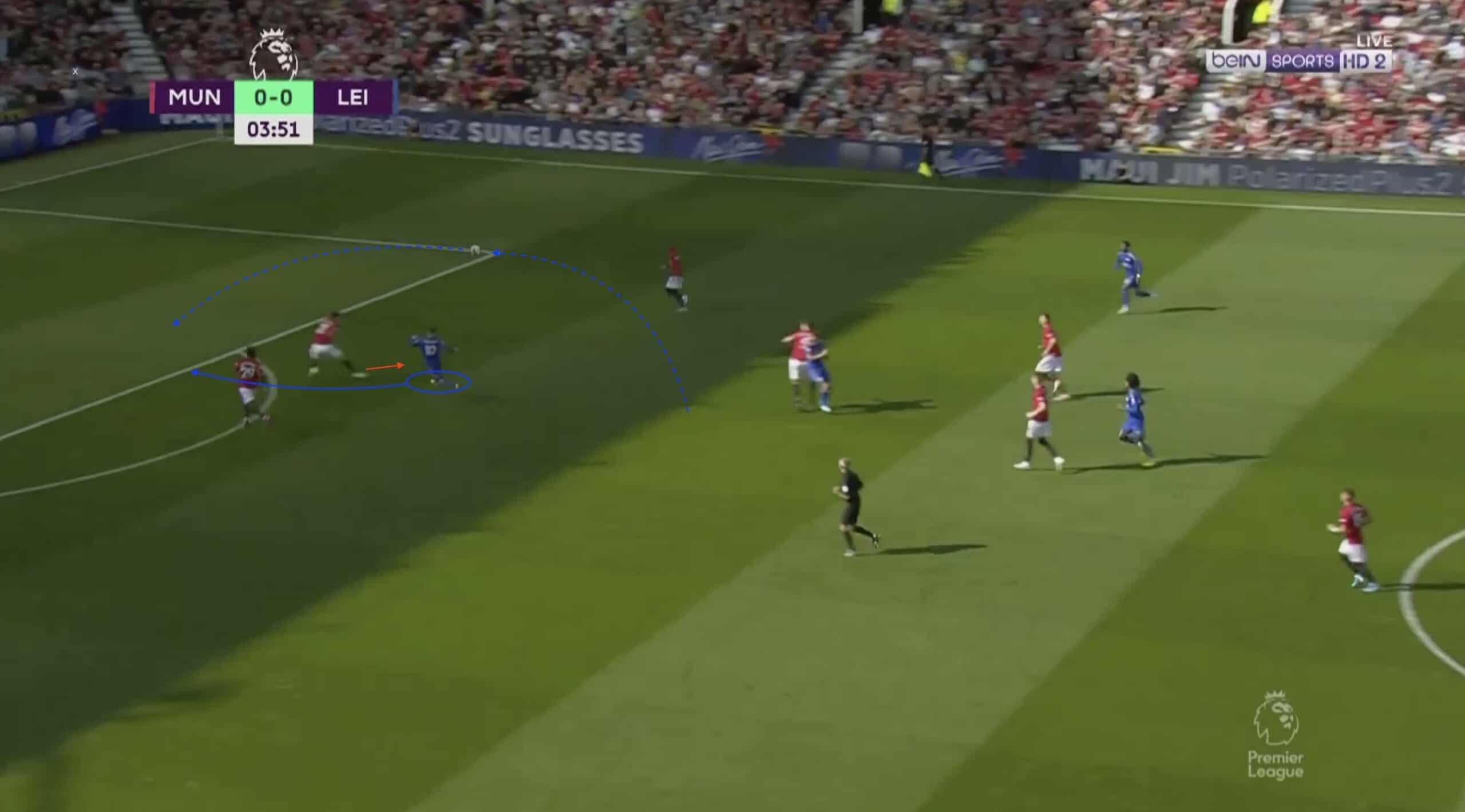
The Swede, however, misjudged the flight of the bounce and took a large step towards the ball, leaving him caught underneath it. A simple step back would have allowed him to make an easy headed clearance. Instead, Maddison gets in front of him and is allowed a shot at goal with an xG of 0.28, which all stemmed from a long straight pass.
Conceding chances from direct long balls has been a concerningly common theme for Man United this season. Below we can see how another example of poor defensive positioning from a long ball leads to a goal being conceded against Crystal Palace.
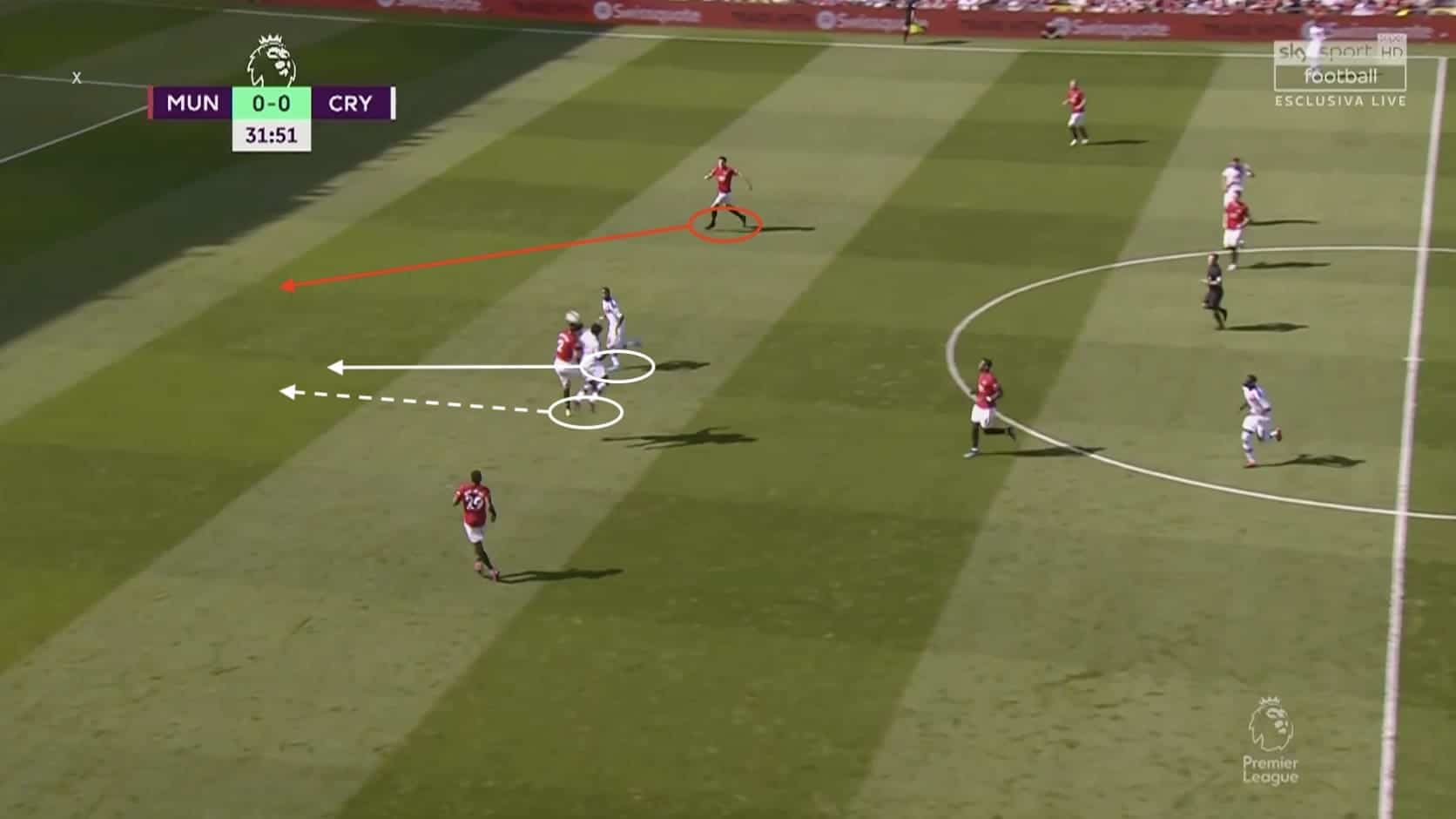
The analysis shows that this time it’s Maguire whose positioning is incorrect. The Englishman is too far from his partner, meaning that when the header is lost, he has too much distance to recover to prevent the goal being scored.
Both Lindelöf and Maguire are picked for their ability to play forward, progressive passes, which they do particularly well. The pair boast a success rate in forward passes of 85% and 79.3% respectively.
Solskjær will be aware that his new centre-back pairing have a lot to learn defensively if they want to be in the hat for the ultimate European draw next season. By using a defensive-minded double-pivot and positioning Pogba further forward might just offer enough protection to keep the victories coming.
Conclusion
An away defeat to Man United will come as a disappointment to the Leicester faithful, who came into the game with a well-founded optimism. An exciting team with a blend of youth and experience will continue on their quest to bridge the ever-decreasing gap between themselves and the top six.
Man United fans will be pleased to put an end to their poor Premier League form with a hard-fought victory against a dangerous Leicester side. The energy has returned to the legs of those wearing red, however, the question still looms as to whether they can consistently produce the quality to match the enthusiasm. And further still, whether Solskjær is the man to orchestrate the transformation.

If you love tactical analysis, then you’ll love the digital magazines from totalfootballanalysis.com – a guaranteed 100+ pages of pure tactical analysis covering topics from the Premier League, Serie A, La Liga, Bundesliga and many, many more. Buy your copy of the August issue for just ₤4.99 here.





Comments